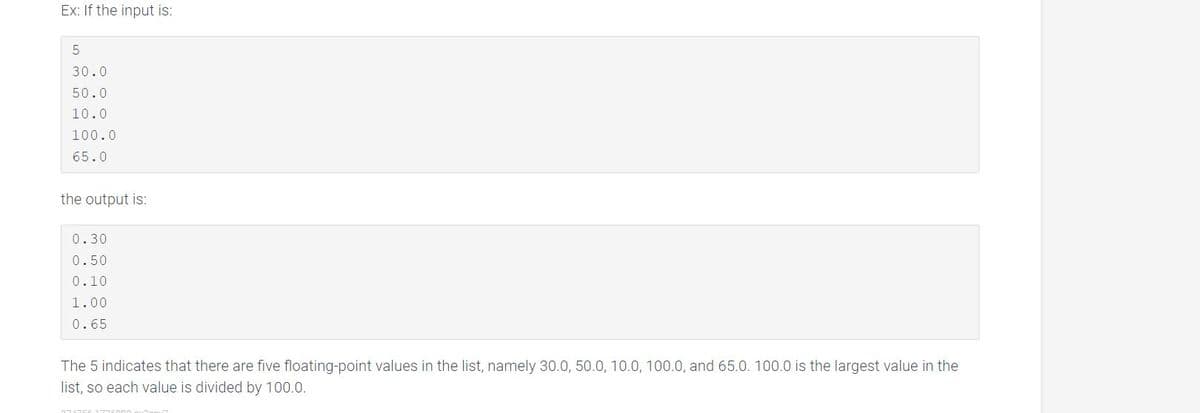When analyzing data sets, such as data for human heights or for human weights, a common step is to adjust the data. This adjustment can be done by normalizing to values between 0 and 1, or throwing away outliers. For this program, adjust the values by dividing all values by the largest value. The input begins with an integer indicating the number of floating-point values that follow. Output each floating-point value with two digits after the decimal point, which can be achieved as follows: print('{:.2f}'.format(your_value))
When analyzing data sets, such as data for human heights or for human weights, a common step is to adjust the data. This adjustment can be done by normalizing to values between 0 and 1, or throwing away outliers.
For this
Output each floating-point value with two digits after the decimal point, which can be achieved as follows:
print('{:.2f}'.format(your_value))

Program:
n = int(input()) # variable n indicates number of integers which will follow
list = [] # an empty list to store all the integers
for i in range(n): # loop to take input for all numbers
num = int(input()) # taking input of all numbers
list.append(num) # adding the inputted number to the list
small = min(list) # extracting the smallest number from the list
for i in range(n): # loop to traverse through the list
list[i] = list[i]-small # subtracting the smallest value from every element
print("\nOutput\n")
for i in range(n): # loop to print the values of the list
print(list[i]) # printing the elements
Trending now
This is a popular solution!
Step by step
Solved in 3 steps with 1 images


